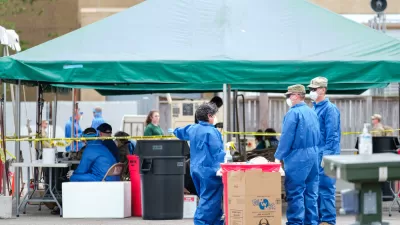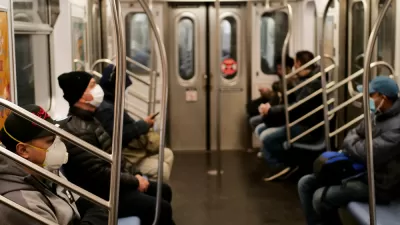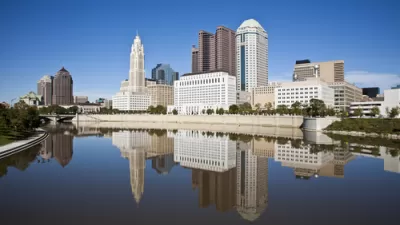The original epicenter of coronavirus outbreak was also the first region in the nation to implement social distancing measures, serving as a national model of behaviors that lessen the spread of the deadly virus.

"The Seattle area, home of the first known coronavirus case in the United States and the place where the virus claimed 37 of its first 50 victims, is now seeing evidence that strict containment strategies, imposed in the earliest days of the outbreak, are beginning to pay off — at least for now," reports
On March 11, the World Health Organization in Switzerland labeled the coronavirus outbreak a pandemic. On the same day, New York City Mayor Bill de Blasio told New Yorkers that they "should go out and continue to live life, should go out to restaurants...", and Washington Gov. Jay Inslee (D) issued his second emergency order "in a way rarely seen" addressing the virus that causes COVID-19.
"Starting today, events that take place in King, Snohomish, and Pierce counties with more than 250 people are prohibited by the state," wrote Inslee in a Medium post.
This order applies to gatherings for social, spiritual and recreational activities. These include but are not limited to: community, civic, public, leisure, faith-based, or sporting events; parades; concerts; festivals; conventions; fundraisers and similar activities.
This may have been the nation's first gubernatorial action enacting social distancing measures, primitive as they may be. It was precipitated by the first death in the U.S. attributed to COVID-19 on Feb. 29 occurring in King County and the first detection of the disease at the Life Care Center of Kirkland (King County), which would eventually claim the lives of 35 of its 81 residents.
The next day, Inslee announced school closures in the same three Seattle area counties. Three days later, on March 15, Inslee announced that he would issue a state-wide emergency proclamation to shut down restaurants and bars, permitting the former to operate take-out and delivery, and reducing permissible gatherings to no more than 50 if social distancing was practiced.
According to an analysis by the Institute for Disease Modeling, a private research group in Bellevue, Wash., the orders "had an effect of reducing the physical social interaction by about 50% - which means about half the rate of person-to-person contagion that they can see in the model," states Martin Kaste in an NPR report on the effectiveness of the early social distancing measures in Washington.
"What we're doing now appears to be working," states Jeffrey Duchin, the Seattle & King County Health Officer. "We should in no way take these findings as an indication to relax our social distancing strategy, that we need to continue this for weeks."
White House takes notice
"We all remember Washington state,” said Dr. Deborah Birx, a public health expert on the White House Coronavirus Task Force at a March 31 press briefing, according to FOX News. “It was just a month ago when they started to have the issues in Washington state.”
“But they brought together their communities and their health providers and they put in strong mitigation methods and testing,” Birx said.
Not just social distancing
Baker also reports that the Seattle "region has also benefited from more widespread testing than most states, helping feed data to the researchers’ models and give a sense of how much infection might be missed."
After scientists found evidence that the virus had been circulating weeks before some of the earliest cases were identified, researchers from local groups, led by the Institute for Disease Modeling, began looking at what it would take to slow the progress of the virus. On March 10, they developed projections showing that significant changes in human-to-human contact would be needed [pdf] to avert hundreds more deaths by April 8.
The Seattle Times headline on March 11was compelling: "Without ‘social distancing,’ 400 could die from coronavirus in Western Washington by April 7, study suggests."
Projection
According to the IMHE model developed by the University of Washington used by Birx and her task force for all 50 states, as of April 5, daily deaths for Washington will peak at 19 on April 6, with total deaths amounting to 632 by August 4. As for the nation as a whole, peak daily deaths are projected on April 16 at 3,130, with total deaths amounting to 81,766 by August 4.
Where Washington is now
-
Coronavirus Declared a Pandemic. What Does That Mean? March 12, 2020
FULL STORY: Coronavirus Slowdown in Seattle Suggests Restrictions Are Working

Planetizen Federal Action Tracker
A weekly monitor of how Trump’s orders and actions are impacting planners and planning in America.

Congressman Proposes Bill to Rename DC Metro “Trump Train”
The Make Autorail Great Again Act would withhold federal funding to the system until the Washington Metropolitan Area Transit Authority (WMATA), rebrands as the Washington Metropolitan Authority for Greater Access (WMAGA).

The Simple Legislative Tool Transforming Vacant Downtowns
In California, Michigan and Georgia, an easy win is bringing dollars — and delight — back to city centers.

The States Losing Rural Delivery Rooms at an Alarming Pace
In some states, as few as 9% of rural hospitals still deliver babies. As a result, rising pre-term births, no adequate pre-term care and harrowing close calls are a growing reality.

The Small South Asian Republic Going all in on EVs
Thanks to one simple policy change less than five years ago, 65% of new cars in this Himalayan country are now electric.

DC Backpedals on Bike Lane Protection, Swaps Barriers for Paint
Citing aesthetic concerns, the city is removing the concrete barriers and flexposts that once separated Arizona Avenue cyclists from motor vehicles.
Urban Design for Planners 1: Software Tools
This six-course series explores essential urban design concepts using open source software and equips planners with the tools they need to participate fully in the urban design process.
Planning for Universal Design
Learn the tools for implementing Universal Design in planning regulations.
Smith Gee Studio
City of Charlotte
City of Camden Redevelopment Agency
City of Astoria
Transportation Research & Education Center (TREC) at Portland State University
US High Speed Rail Association
City of Camden Redevelopment Agency
Municipality of Princeton (NJ)





























